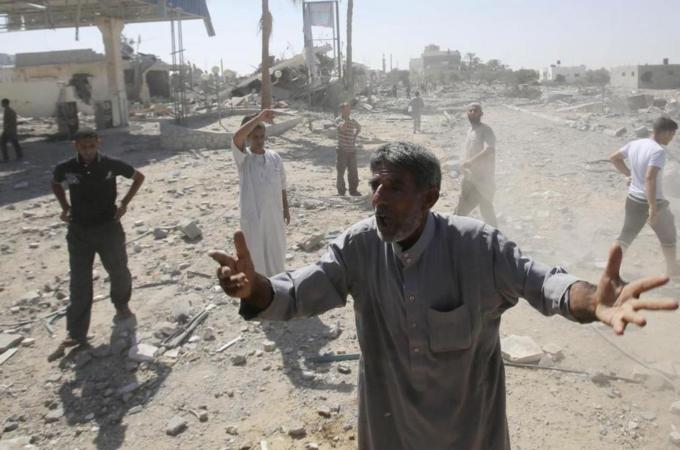By Kathryn Maureen Ryan
Impunity Watch Reporter, Managing Editor
BAGHDAD, Iraq – The battle between militants belonging to the Islamic State of Syria and Levant (ISIS) and the Iraqi national government forces and Kurdish regional peshmerga forces has taken a toll on Iraq’s critical infrastructure including the nation’s oil reserves and industry infrastructure, power plans and, most recently, the countries massive hydraulic power system.

Earlier this month ISIS forces seized control of the Mosul Dam, once known as the “Saddam Dam,” which is a key component of Iraq’s massive hydroelectric power and Irrigation system spanning the Tigris and Euphrates watershed. The 3.2-kilometer-long Mosul Dam is the largest dam in Iraq and the fourth largest in the Middle East. The Hydroelectric dam is located along the Tigris River and holds back as much as 12.5 million cubic meters of water. If the dam were to be breached it would create a wall of water tens of feet tall that would cause massive flooding in Mosul, threatening its 1.7 million residents, and would cause massive flooding in communities as far downstream as Baghdad.
On Monday Kurdish peshmerga fighters, backed by US warplanes conducting strategic airstrikes against ISIS strongholds, pressed a counter-offensive against ISISS forces retaking the Mosul Dam alongside Iraqi government forces. US aircraft are carrying out strikes in support of the forces battling ISIS militants, who have declared a caliphate areas under their control in both Iraq and Syria. “The planes are striking and the peshmerga are advancing,” a Kurdish fighter said on Monday near the shores of the Mosul dam.
While critics argued that aiding Iraqi forces in retaking the Mosul dam and other infrastructure may constitute mission creep beyond US forces initial mission in Iraq Administration officials have argued that the Mosul Dam is critical to Iraqi national security as well as the security of US interests in the region citing evidence that ISIS forces was not performing necessary maintenance on the dam as well as fears that the group was planning to destroy the dam, potentially endangering millions of Iraqi residents.
ISIS has a history of using water infrastructure as a weapon of war. Earlier year, its fighters opened the gates on the Falluja Dam in central Iraq after seizing it in an effort to stop the military from advancing. The water from the dam flooded a several villages. “ISIS has already used other smaller dams to gain control of territory, to pressure Sunnis to support them and to punish the Shiites,” said Daniel Pipes, president of the Middle East Forum.
The recapture of Mosul dam marks the biggest victory in the Iraqi governments struggle to take back assets seized by ISIS since the organization launched a massive offensive in Northern Iraq in June.
For more information please see:
CBS News – Emboldened by U.S. strikes, Iraq goes on offense – 19 August 2014
CNN International – U.S. airstrikes critical in Mosul Dam capture – 18 August 2014
The Guardian – Iraqi and Kurdish forces recapture Mosul dam from ISIS – 18 August 2014
The New York Times – Troops in Iraq Rout Sunni Militants From a Key Dam – 18 August – 2014


 Foreign affairs expert Robert Kaplan writes that the total number of Iraqi leader Saddam Hussein’s victims, depending upon how you count, may reach upwards of a million. (Nikola Solic/Associated Press)
Foreign affairs expert Robert Kaplan writes that the total number of Iraqi leader Saddam Hussein’s victims, depending upon how you count, may reach upwards of a million. (Nikola Solic/Associated Press)
 ‘We were just given a tip-of-the-iceberg look of the horror,’ said former war crimes prosecutor David Crane, one of the authors of a report into the atrocities committed by the Bashar al-Assad regime in Syria. (Vahid Salemi/Associated Press)
‘We were just given a tip-of-the-iceberg look of the horror,’ said former war crimes prosecutor David Crane, one of the authors of a report into the atrocities committed by the Bashar al-Assad regime in Syria. (Vahid Salemi/Associated Press)